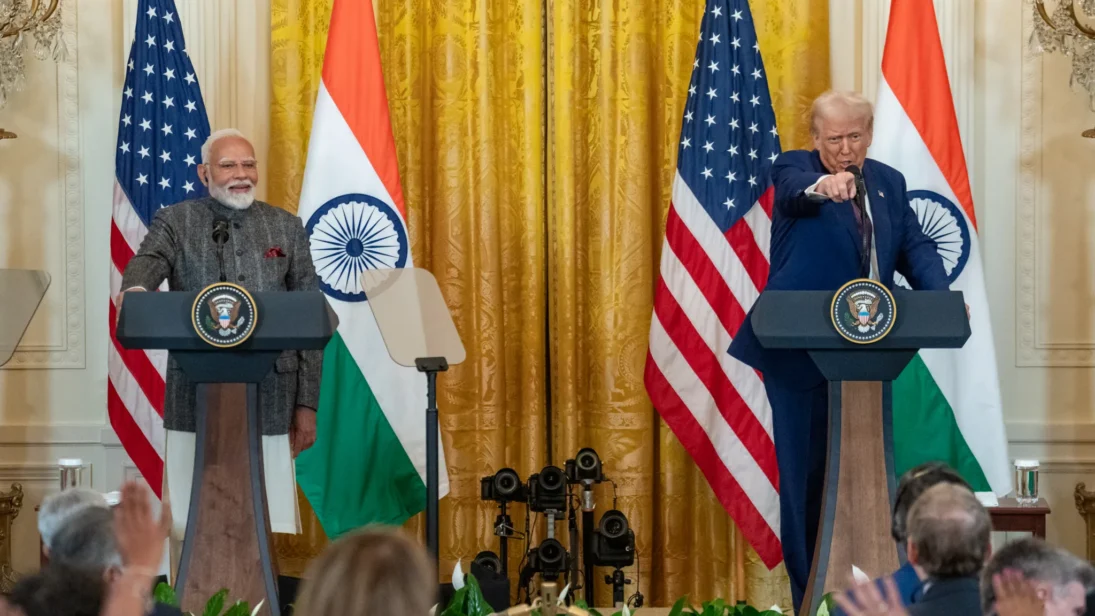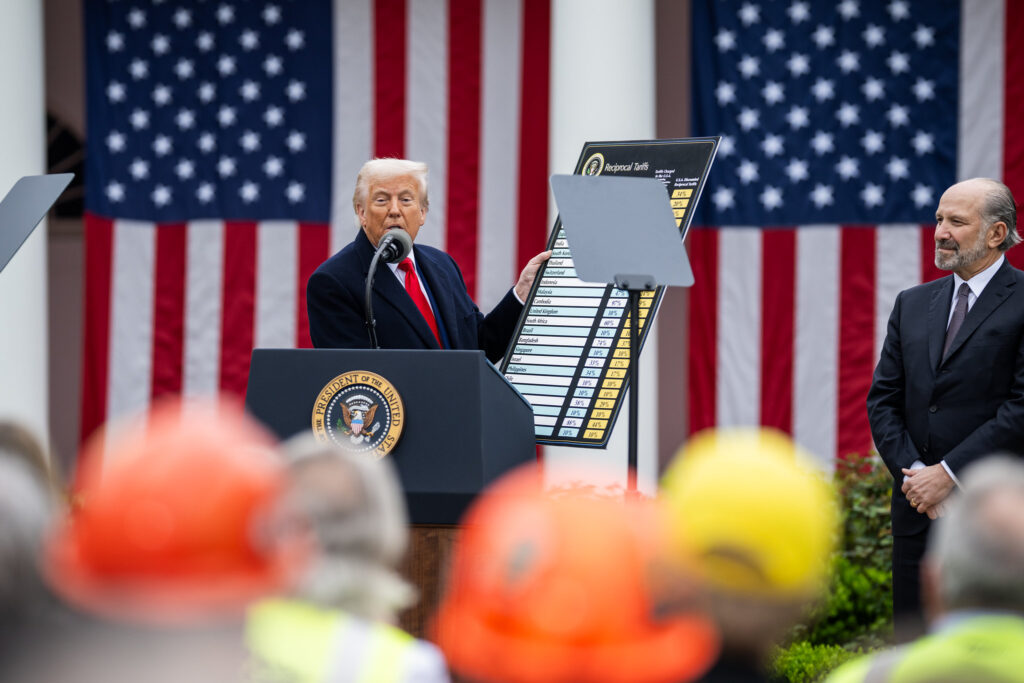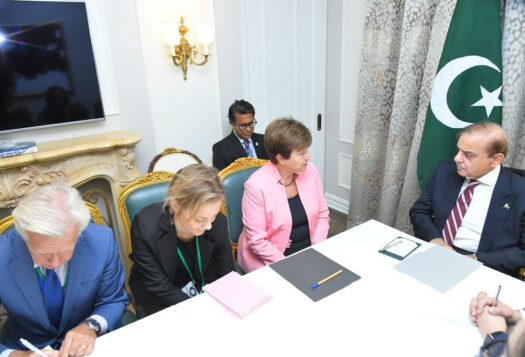
Under U.S. President Donald Trump, Washington is increasingly using volatility to assert its economic power against allies and adversaries alike. Since returning to power, Trump has unleashed an aggressive blend of economic, trade, and technology policies with the aim of redrawing the contours of the global economy, potentially sparking a currency war. A striking recent outcome of this strategy was the abrupt surge in U.S. bond yields in April, following the deliberate offloading of U.S. treasuries by both a strategic partner, Japan, and an adversary, China—sending an implicit warning against Trump’s tariff brinkmanship and indicating a threat to the dollar’s global reserve status.
In response to the bond markets, Trump tempered his approach—suspending his reciprocal tariffs regime for 90 days. But his administration has not yet halted its efforts to forcibly restructure global financial networks. It continues to weaponize the dollar toward various ends, thereby inducing financial instability in ways that could leave developing countries exposed to currency shocks, capital flight, and mounting external vulnerabilities amid global policy uncertainty.
Given this context, it is important to decode the U.S. currency playbook and its consequences for emerging and developing economies like India’s. For New Delhi, Trump’s actions represent both a challenge and an opportunity, though Indian policymakers will have to be nimble and foresighted if they are to take advantage of the openings created by Trump’s efforts at remaking the global economic order.
It continues to weaponize the dollar toward various ends, thereby inducing financial instability in ways that could leave developing countries exposed to currency shocks, capital flight, and mounting external vulnerabilities amid global policy uncertainty.
Deliberate Devaluation
As Trump’s second term takes shape, dollar devaluation has re-emerged as a core pillar of U.S. economic statecraft, tightly bound to the president’s agenda of trade competitiveness, industrial revival, and debt reduction. With U.S. public debt surpassing USD $36 trillion and interest outflows swelling under high Federal Reserve rates, Trump frames a strong dollar not as a sign of strength but as a structural handicap—making it harder for American manufacturing to compete. As Stephen Miran, the chair of Trump’s Council of Chief Economic Advisers, explained, “the reserve function of the dollar has caused persistent currency distortions and… unsustainable trade deficits. These trade deficits have decimated our manufacturing sector.”
Reprising themes from his first term, Trump continues to brand trading partners, especially China and the European Union, as “currency manipulators.” In 2019, for example, Trump tweeted: “China and Europe playing [a] big currency manipulation game and pumping money into their system in order to compete with the USA. We should MATCH or continue being the dummies.” In April 2025, a similar social media post from the U.S. president referred to currency manipulation as the top method of “non-tariff cheating.”
Trump now wants to undo the dollar’s perceived over-valuation using several tactics, including not only sweeping tariffs but also the renewed use of legal instruments such as Section 301 of the Trade Act of 1974. This permits the imposition of tariffs or other sanctions on countries that the United States believes rely on “unfair trade practices,” a label that includes alleged currency manipulation.
He has also intensified public pressure on the U.S. Federal Reserve to lower rates, blending demands on the U.S. central bank with trade provocations. In January, while speaking at the World Economic Forum, he was quoted as saying, “with oil prices falling, I will demand an immediate cut in interest rates — and they should be lowered globally as well.” In a February post on Truth Social, he wrote: “Interest Rates should be lowered, something which would go hand in hand with upcoming Tariffs!!!” In April, he declared that Federal Reserve chairman Jerome Powell is always “TOO LATE AND WRONG” and that his termination “cannot come fast enough.” In addition, the U.S. administration even floated the possibility of direct currency market intervention, akin to the 1985 Plaza Accord, by selling dollars to weaken the currency – though this approach, dubbed a “Mar-a-Lago Accord,” has yet to be formally endorsed.

Such fiery rhetoric amplifies uncertainty, signaling potential executive interference in monetary policy. Markets, caught between political bluster and institutional caution, are bracing for erratic dollar swings and destabilized capital flows. For developing countries, the fallout of such moves would be profound: capital flight, currency instability, rising debt servicing costs, and systemic exposure to U.S. volatility. The shadow of President Trump’s legal-economic nationalism now looms large over an increasingly fragile global financial architecture.
Consequences for Emerging Economies
As Washington increasingly weaponizes the dollar via tariffs, pressure on the Federal Reserve, and threats of currency intervention, developing and emerging economies face mounting risks. Trump’s devaluation strategy under a mercantilist-style America-First approach may boost U.S. exports, but it threatens to destabilize global trade, capital flows, and debt markets. Countries with high external debt or dollar-denominated trade, like Egypt, Ghana, and Sri Lanka, could see their macroeconomic vulnerabilities worsen amid shifting investor sentiment and rising financing costs. Remittance-dependent nations also face reduced inflows as weaker dollar valuations erode real household income. This volatility heightens inflation expectations, triggers currency mismatches, and stresses balance-of-payments positions. Observers from across the world, particularly in Africa and Latin America, are already calling for debt restructuring, with the International Monetary Fund saying such efforts might be “essential” given elevated uncertainty.
India too must navigate this turbulence, with implications for exports, capital markets, and reserve management. If dollar dominance were to become less predictable, many economies would accelerate their push for de-dollarization to mitigate exposure to unilateral U.S. policy shocks and safeguard financial stability. All set to become the world’s fourth-largest economy by the end of 2025 and already a key player among emerging markets, India finds itself both exposed and potentially empowered. A weaker dollar may lower India’s import bill, especially for crude oil (as it is priced in dollars), helping curb inflation and improving the current account balance. It could also ease the cost of servicing India’s USD $717 billion in external liabilities and yield translation gains for corporations. Moreover, high-value imports critical to India’s industrial push, such as semiconductor tools, machinery, and electronics, may become more affordable.
The shadow of President Trump’s legal-economic nationalism now looms large over an increasingly fragile global financial architecture.
Yet, the challenges are equally significant—and not limited to just the tariff barriers. The United States remains India’s largest export market, particularly for information technology (IT) and IT-enabled services, pharmaceuticals, and textiles. A depreciating dollar could trigger renegotiation of service contracts, margin compression, and revenue headwinds. It could also have a negative effect on India’s expansive plans to grow manufacturing and plug into global value chains by making its goods uncompetitive. Major Indian IT firms have already flagged foreign exchange volatility as a business risk in recent earnings calls. Furthermore, remittance inflows, especially from the Gulf and the United States—which totaled over USD $129 billion in 2024—could decline in value, disproportionately impacting household consumption in states like Kerala, Andhra Pradesh, and Punjab.
Compounding these pressures, the Reserve Bank of India (RBI)’s dollar-heavy forex reserves face valuation losses in a weakening dollar environment. A U.S.-induced capital flight from emerging markets could push Indian bond yields higher, tighten external financing conditions, and create refinancing risks for businesses. India’s vulnerability in such a scenario illustrates the perils of a dollar-centric global financial system.
This volatility also fuels the global discourse on de-dollarization. Countries such as Russia, China, Iran, and the United Arab Emirates are increasingly shifting trade settlements to non-dollar currencies. Even U.S. allies, wary of unilateral financial sanctions and extraterritorial reach, are seeking to reduce their reliance on the dollar. For India, this trend presents a strategic opening, but also a complex challenge. Embracing currency diversification and regional trade mechanisms can enhance India’s financial sovereignty, but moving away from the dollar too rapidly could disrupt existing trade-financial linkages and invite short-term instability, especially in the context of Trump’s promise to punish nations seeking de-dollarization.
India’s Options
India must respond with a calibrated, forward-looking strategy. First, it should diversify trade invoicing across multiple currencies, particularly in deals with the EU, Japan, and regional partners. Second, the RBI should rebalance its forex reserves to include a greater share of gold, euros, and other stable currencies. Third, India must strengthen its rupee trade settlement mechanisms, especially with Russia, the UAE, and ASEAN nations, to mitigate over-dependence on the dollar. Fourth, Indian policies should encourage businesses to hedge their foreign currency exposures more actively by diversifying their reserve portfolio. Lastly, New Delhi should also leverage its fintech infrastructure, like the Unified Payments Interface, to internationalize the rupee and build digital payment linkages with friendly economies. A diplomatic push for rupee-based transactions can insulate the economy from U.S.-centric currency shocks, exemplified by the potential recent India-UAE trade settlement.
In this emerging era of financial multipolarity, the dollar may remain dominant, but no longer unchallenged. India must use this moment not only to shield its economy but also to shape the contours of a more resilient and diversified global financial architecture.
Views expressed are the author’s own and do not necessarily reflect the positions of South Asian Voices, the Stimson Center, or our supporters.
Also Read: Trump-Modi Meet: A Lot of Resolve Despite a Lot to Resolve
***
Image 1: The White House
Image 2: The White House via Flickr


